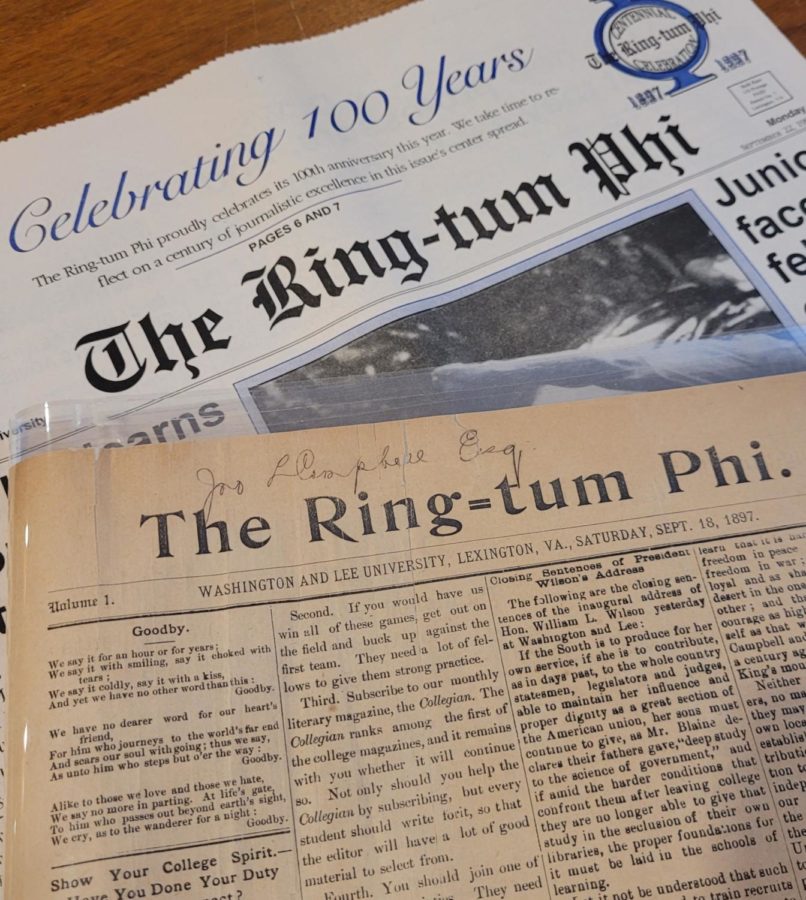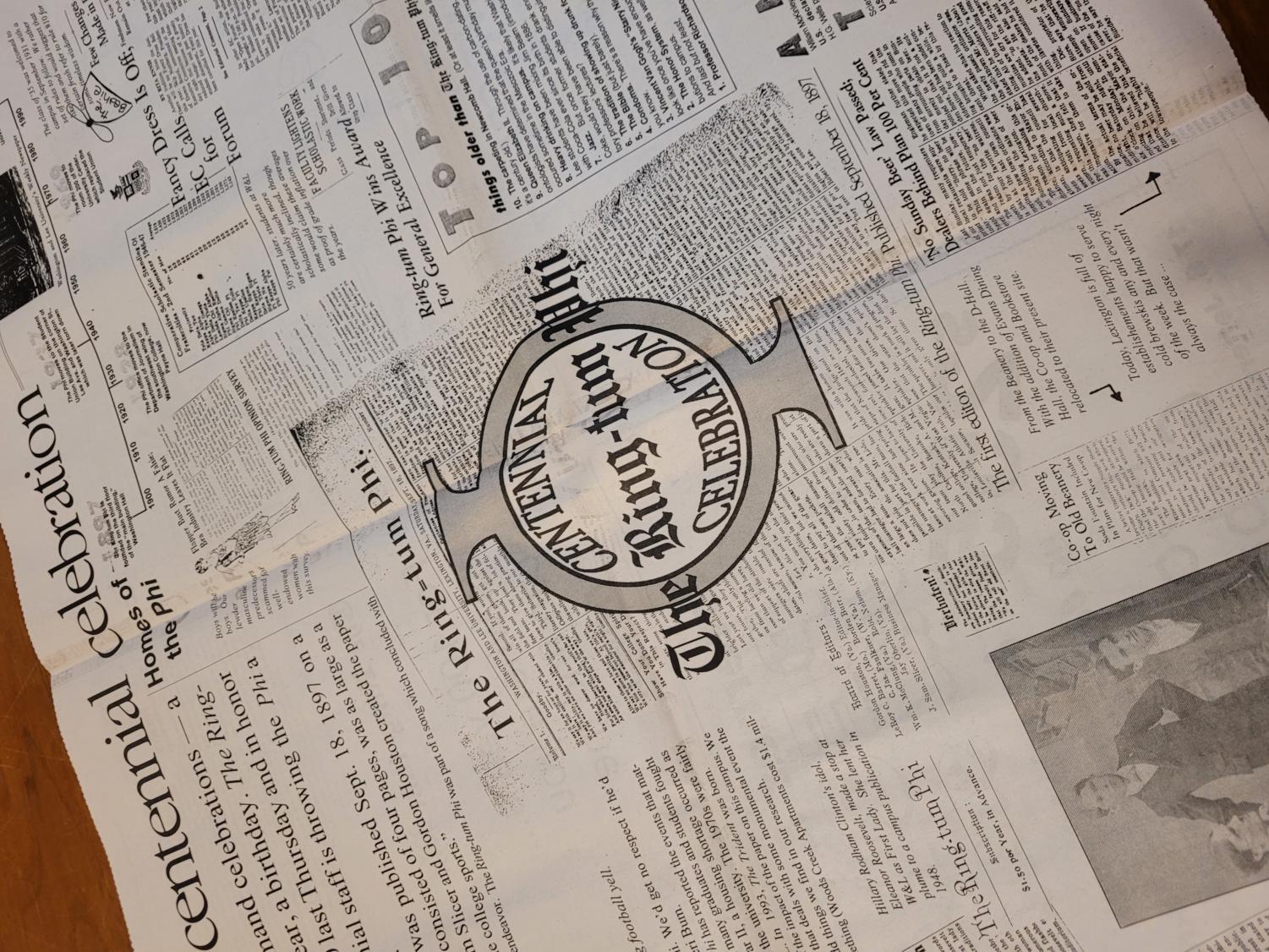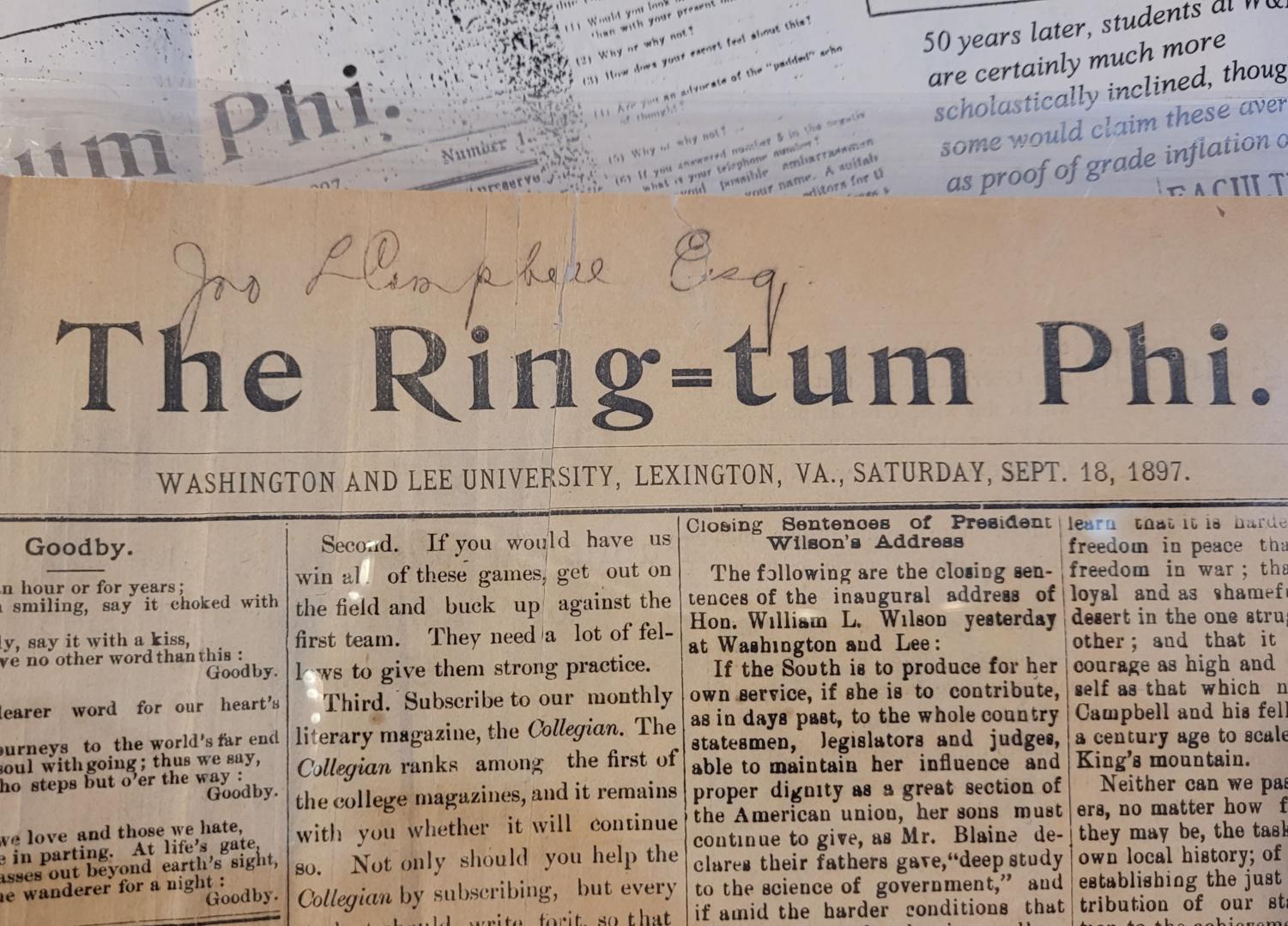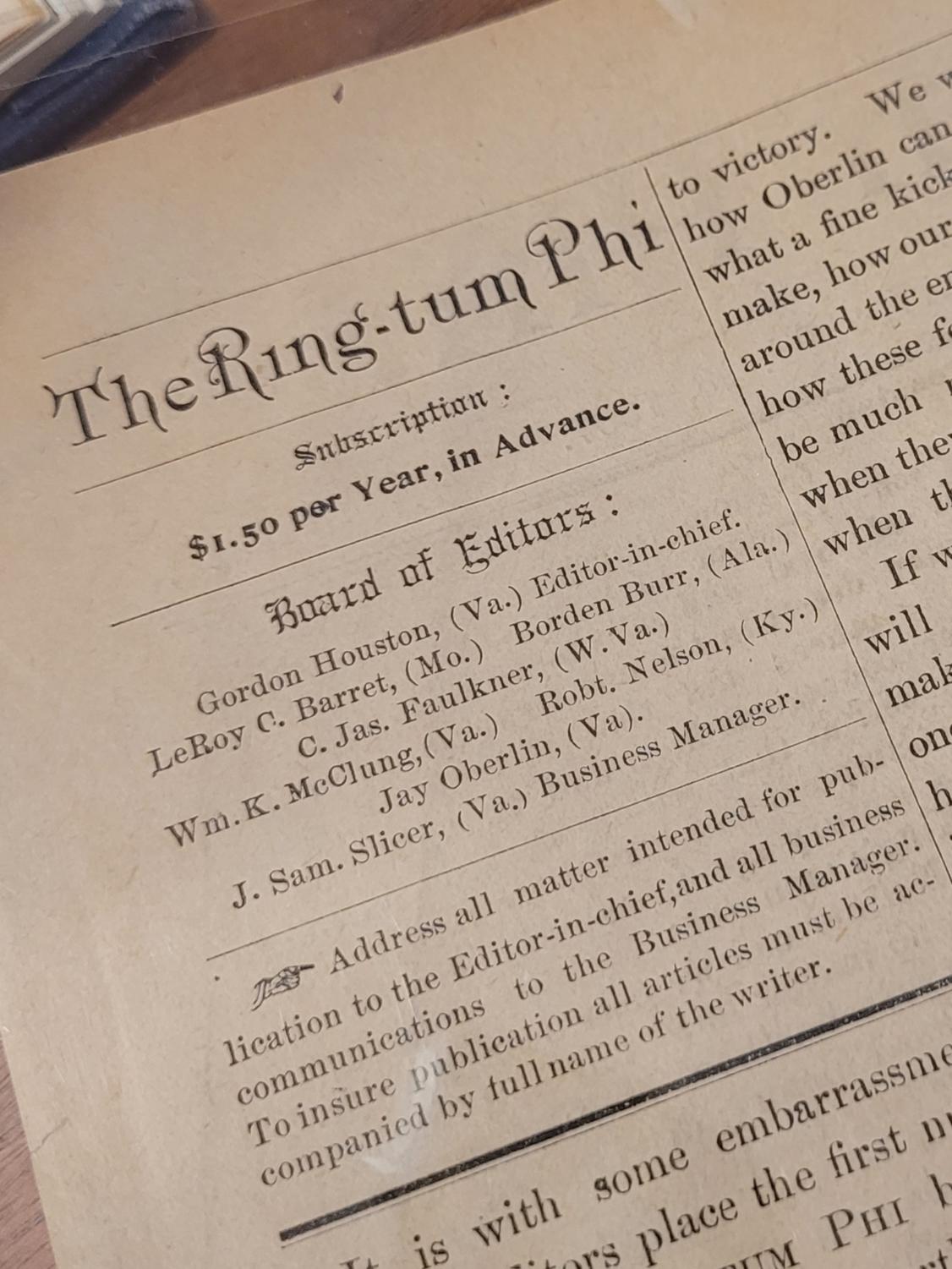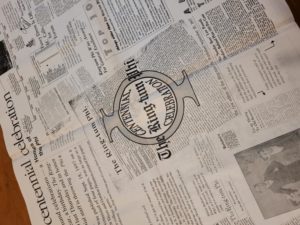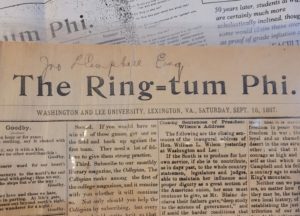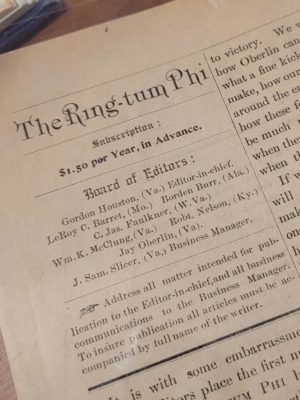New organization emerges, aims to explore and preserve local history
Students for Historical Preservation started ‘in the midst of a controversy.’
Both the first edition (front) and the centennial edition (back) of the Ring-tum Phi are shown here. The first issue was released Sept. 18, 1897.
September 27, 2021
The Special Collections Department in Leyburn Library has new guests this year: the members of the Students for Historical Preservation (SHP).
SHP “came to life in the midst of a controversy,” said Tom Camden, faculty advisor of the club and head of the Special Collections Department. “The students recognized that they needed more information because there were aspects of the school’s history that were being challenged, but not fully addressed.”
The idea for the club originated last year during hard discussions about Washington and Lee’s namesakes, George Washington and Robert E. Lee, as well as the school’s complex history. Kamron Spivey, president of SHP, outlined two goals for the club this year: to learn about the university and the surrounding community’s history, and to actively preserve and maintain the history for future generations.
Students in the club will perform archival research in Special Collections to explore the university’s long and complex history. Later in the year, the club plans to initiate community-wide service opportunities such as transcribing archived documents for digitization and cleaning tombstones and historical markers.
Spivey stressed the importance of going to Special Collections and being able to work directly with the documents and re-sources about local and university history. “It’s good to know what your views are through historical research,” Spivey said. “You need to be academically grounded in your arguments.”
Camden said he believes the hands-on experience will allow students to receive an objective and comprehensive historical standpoint about the issues the school faces. “It’s imperative that we hear all of the voices of our history,” Camden elaborated.
The club has no mandatory meetings or assignments. Students are simply encouraged to come and learn whenever possible. Officers of the club say they are open to suggestions and questions about exploring Lexington’s history.
“We want to learn about our namesakes Washington and Lee, but also everything else before, after and in between,” said Margaret Alexander, vice president of the club. The members of SHP are excited to engage students, parents and alumni in their mission by posting frequent research findings, event announcements and university fun facts on their Instagram (@wlu.shp).
Faculty members of Special Collections worked together to gather archives and information about the Ring-tum Phi, providing an example of the kind of research involved in being a member of SHP. Enjoy the following fun facts about the school’s oldest student-run publication!
- The first issue of the Ring-tum Phi was released on Sept. 18, 1897. It contained a variety of stories including “Show Your College Spirit. – Have you Done Your Duty in This Re-spect?” and “Closing Sentences of President Wilson’s Address.”
- Ring-tum Phi founders Sam Slicer and Gordon Houston wrote in the first issue, “If we can get out a paper which will interest you, one which will make you have more college spirit, one which will make you strive harder to make the name of Washing-ton and Lee more glorious, we will be satisfied.”
- Originally, the publication focused mainly on sports, adopting its name from the school’s football cheer: “Let’s give a rousing rumbling roar-ing football yell / ring tum phi, stickery bum / we are the stuff from old Lexington.”
- The Ring-tum Phi almost closed after its first year of operation due to a debt of $97 that was owed to the local print shop.
- The publication’s mission statement has varied over the years between “by the students, for the university” and “by the students, for the students,” often depending on the editors’ opinion of the school at the time.
- The publication has remained independent and student-run for 124 years, providing quality stories on topics ranging from Honor System trials to student involvement in world.



